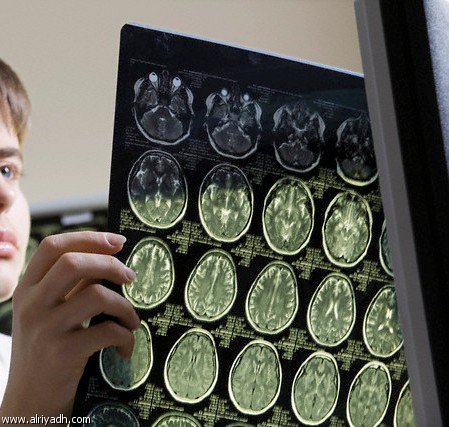دراسات تؤكد علاقتها بتشتت الانتباه وفرط الحركة عند الأطفال
المبيدات الحشرية والألوان الصناعية تحمل مخاطر صحية عالية

الدراسات تؤكد ضرر المبيد على صحة الطفل
د.خالد بن عبد الله المنيع
في العددين السابقين ناقشنا اضطراب تشتت الانتباه وفرط الحركة عند الاطفال، اعراضه، أنواعه، تأثيره على حياة الطفل الاجتماعية والتعليمية. اليوم نستعرض وإياكم الجزء الاخير في موضوع هذا الاضطراب فيما يخص أسبابه وطرق العلاج.

يجب غسل الفواكه قبل تناولها
أثار اضطراب فرط الحركة ونقص الانتباه اختلافات في وجهات النظر في الجوانب المتعلقة بتشخيصه وعلاجه منذ سبعينيات القرن العشرين. وقد تباينت الآراء بشأن هذا الاضطراب حول الاعتقاد بوجود أسباب وراثية وفسيولوجية للإصابة به، وكذلك الأمر بالنسبة للخلاف حول استخدام الأدوية المنشطة في العلاج. يتفق معظم العاملين في مجال توفير الرعاية الصحية أن اضطراب فرط الحركة ونقص الانتباه يعد من أهم الاضطرابات التي تشغل جانبًا من النقاش الدائر في الأوساط العلمية عن كيفية تشخيصه وعلاجه في المقام الأول.

تدخين الحامل من عوامل الاضطراب
يعتقد الباحثون أن الغالبية العظمى من الحالات التي تعاني من اضطراب فرط الحركة ونقص الانتباه تنشأ عن وجود مجموعة من الجينات المختلفة.
كما تشير دراسات التوائم إلى أن ما يتراوح بين 9% و20% من التباين في السلوك الذي يتميز بفرط النشاط والاندفاع ونقص الانتباه يمكن إرجاعه لعوامل تتضمن التعرض لدخان السجائر أثناء الحمل واستنشاق الرصاص من البيئة أثناء المراحل الاولى من الطفولة وتلعب المضاعفات التي تحدث أثناء الحمل والولادة، بما في ذلك الولادة المبكرة، دورًا أيضًا في الإصابة بهذا الاضطراب.

وكذلك الألوان الصناعية في الحلويات
من ناحية أخرى ربطت إحدى الدراسات التي أجريت في عام 2007 م بين المبيد الحشري المكون من الفوسفات العضوي، والذي يستخدم في رش بعض الفواكه والخضروات، وبين تأخر معدلات التعلم، وتراجع التناسق البدني، والمشكلات السلوكية لدى الأطفال، وخاصة اضطراب فرط الحركة ونقص الانتباه.
وفي دراسة أخرى أجريت عام 2010 م دعمت الدراسة السابقة في وجود علاقة بين التعرض للمبيدات وزيادة احتمال تعرض الأطفال لاضطراب فرط الحركة ونقص الانتباه حيث قام باحثون بتحليل مستويات مخلفات الفوسفات العضوي في البول لأكثر من 1100 طفل تتراوح أعمارهم بين 8 و15 سنة، ووجدوا أن الأطفال الذين سجلوا أعلى مستويات للفوسفات هم الأكثر تعرضًا للإصابة باضطراب فرط الحركة ونقص الانتباه.
وفيما يخص النظام الغذائي لوحظ وجود علاقة بين تناول الأطفال للكثير من الألوان الصناعية التي يشيع استخدامها في المواد الغذائية، ومادة بنزوات الصوديوم الحافظة، وبين فرط الحركة بناء على دراسة أجراها باحثون في جامعة "ساوثهامبتون" في المملكة المتحدة ونُشرت في مجلة "لانسيت" في نوفمبر 2007 م.

تناول العلاج تحت اشراف الطبيب
كذلك فان العوامل الاجتماعية هي أحد الأسباب المساهمة في ظهور هذا الاضطراب في هذا المنحى تذكر منظمة الصحة العالمية أن الإصابة باضطراب فرط الحركة ونقص الانتباه يمكن أن ينجم عن خلل وظيفي أسري أو أوجه قصور في النظام التعليمي وليس ناجمًا عن أمراض نفسية.
وقد أشار باحثون أن سلوك الأطفال الذين عانوا من العنف وسوء المعاملة العاطفية ظهرت لديهم أعراض تشبه سلوك الأطفال المصابين باضطرابات فرط الحركة ونقص الانتباه. علاوةً على ذلك، قد يترتب على معاناة المريض من اضطراب ضغط ما بعد الصدمة النفسية حدوث مشكلات متعلقة بالانتباه ومشابهة لهذا الاضطراب .

اضطراب فرط الحركة تصاحبه تغيرات عصبية
تتسم الفيسيولوجيا المرضية لاضطراب فرط الحركة ونقص الانتباه بأنها معقدة وغير واضحة، وهناك عدد من النظريات المتضاربة في هذا الإطار. تبين الأبحاث التي أجريت على الأطفال الذين يعانون من اضطراب فرط الحركة ونقص الانتباه انخفاض حجم الدماغ بوجه عام، ولكن مع انخفاض أكبر نسبيًا في حجم القشرة الأمامية من الجانب الأيسر في عام 2005 م خلص استعراض للدراسات التي تناولت كلا من التصوير العصبي وعلم الوراثة النفسي العصبي والكيمياء العصبية إلى وجود دلائل مشتركة ترجح أن هناك أربع مناطق عصبية أمامية في المخ متصلة مع بعضها تلعب دورًا في الفسيولوجيا المرضية لاضطراب فرط الحركة ونقص الانتباه.

والكيك
كذلك ذكرت إحدى الدراسات أن تأخرًا في نمو أنسجة معينة في الدماغ بمتوسط ثلاث سنوات قد لوحظ بين مرضى اضطراب فرط الحركة ونقص الانتباه ممن هم في سن المدرسة الابتدائية. وأبرز منطقتين حدث فيهما هذا التأخر هما القشرة الأمامية والفص الصدغي واللذان يُعتقد أنهما المسؤولان عن القدرة على التحكم في السلوك والتركيز. في المقابل، لوحظ نمو القشرة الحركية لدى المصابين باضطراب فرط الحركة ونقص الانتباه بمعدل أسرع من المعدل الطبيعي. وبالتالي، يحدث عندهم التململ الذي يميز هذا المرض .
إضافةً إلى ذلك، أثبتت صور أشعة باستخدام تقنية التصوير بالإشعاع الفوتوني المقطعي " " SPECT ضعف الدورة الدموية لدى المصابين باضطراب فرط الحركة ونقص الانتباه مما يشير إلى انخفاض النشاط العصبي.

المتابعة الطبية مهمة
طرق العلاج
تتضمن غالبًا مزيجًا من تعديل السلوك والعلاج الدوائي وقد أشارت النتائج إلى أن الدواء يؤدي إلى تحسين السلوك في حالة تناوله على المدى القصير، إلا أنه لا يؤدي إلى تغيرات ملموسة على المدى الطويل.
في المقابل توجد أدلة قوية على فعالية طرق العلاج السلوكية في علاج اضطراب فرط الحركة ونقص الانتباه.
تتضمن وسائل العلاج النفسي المستخدمة لعلاج اضطراب فرط الحركة ونقص الانتباه وسائل نفسية وتقنيات سلوكية غير دوائية وعلاجا سلوكيا.
تنامى في الغرب الاهتمام بهذا النوع الآمن من العلاج النفسي خصوصا بعد القلق الذي يثار حول طبيعة الدواء المستخدم للعلاج والجهل بآثاره الجانبية على المدى الطويل من جانب، وبسبب التشخيص المتسرع لهذا الاضطراب من جانب اخر.
وقد ازداد استخدام العلاج المعرفي السلوكي توسعا في الاونة الأخيرة وذلك بعد النتائج التي اظهرتها دراسة علمية عام 2004 م، والتي اوضحت بعض المخاطر المحتملة لبعض الادوية المستخدمة للعلاج في حالة الاطفال الذين يعانون من مشكلات في القلب أو مشكلات صحية أخرى.
العلاج بالمنشطات
تعد المنشطات هي الأدوية التي يوصَى بها عادةً لعلاج اضطراب فرط الحركة ونقص الانتباه، وأكثر المنشطات شيوعًا هي الميثيلفينيديت (وتضم الريتالين والميتاديت والكونسيرتا) والديكستروأمفيتامين (الديكسيدرين) وأملاح الأمفيتامين.
تؤدي المنشطات المستخدمة في علاج اضطراب فرط الحركة ونقص الانتباه إلى رفع تركيزات الناقلات العصبية مثل الدوبامين والنورابنفرين خارج الخلايا مما يؤدي إلى زيادة معدل النقل العصبي.
وقد أثبت تحليل لمجموعة تجارب إكلينيكية أن حوالي 70% من الأطفال يتحسنون بعد تناول المنشطات كعلاج على المدى القصير ولكن هذا الاستنتاج قد لا يكون دقيقًا بسبب العدد الهائل من التجارب الإكلينيكية ذات الجودة التحليلية المتدنية.
على الرغم من "أن الأدوية المنشطة تعد آمنة من حيث الاستخدام إذا تم تناولها تحت إشراف الطبيب"، فإن استخدام هذه الأدوية لعلاج اضطراب فرط الحركة ونقص الانتباه قد أثار جدلاً بسبب الآثار الجانبية غير المرغوبة، والآثار غير المؤكدة على المدى الطويل.
يوجد نوعان من الأدوية غير المنشطة التي يوصَى بها لعلاج اضطراب فرط الحركة ونقص الانتباه وهما أتوموكسيتاين (ستراتيرا)، وجوانفاسين (إنتونيف).
والتقرير باللغه الانجليزيه
Pesticides and artificial colors with high health risks
Studies confirm their relationship to dispersion of attention and hyperactivity in children
Pesticides and artificial colors with high health risks 
Studies confirm the pesticide damage to child health
Dr. Khaled bin Abdullah Al-Manea
The former discussed issues distract disorder and hyperactivity in children, symptoms, types, impacts on social and educational life of the child. Today we review with you the last part in this disorder with respect to its causes and treatment methods.

Wash the fruit before consumption
Effects of disorder attention deficit hyperactivity disorder and differences in views on aspects of diagnosis and treatment since the 1970s. There were different views on the turmoil around the belief that genetic and physiological reasons, as well as the controversy over the use of stimulant medications in treatment. Most involved in the provision of health care that disorder and attention deficit hyperactivity disorder is one of the most important disorders that are part of the debate in the scientific community about how to diagnosis and treatment in the first place.

Pregnant smoking factors of disorder
Researchers believe that the vast majority of cases suffer from attention deficit hyperactivity disorder and arise from a range of different genes.
Twins studies also indicate that between 10% and 20% of the variation in behavior characterized by hyperactivity and impulsivity and attention deficit can be traced to factors, including exposure to cigarette smoke during pregnancy and inhaling lead from the environment during the early stages of childhood playing complications during pregnancy and childbirth, including premature birth, also played a role in this disorder.

As well as artificial colors in confectionery
On the other hand have a study conducted in 2007 between insecticide consisting of organic phosphate, which is used to spray some fruits and vegetables, and the delay in learning rates and declining physical consistency, and behavioral problems in children, especially disorder hyperactivity and attention deficit.
In another study conducted in 2010 in the former study supported a relationship between exposure to pesticides and increased the vulnerability of children to disorder and attention deficit hyperactivity disorder where researchers analyzed organic phosphate residue levels in the urine of more than 1,100 children aged 8 to 15 years, and found that children who had the highest levels of phosphates are most vulnerable to the disorder and attention deficit hyperactivity disorder.
With regard to the diet there was a relationship between the children of many colors, which are commonly used in food, and a sodium benzoate preservative and hyperactivity on a study conducted by researchers at the University of Southampton in the United Kingdom, published in the journal "the Lancet" in November 2007.

Treatment under the supervision of a doctor
The social factors is one of the reasons contributing to the emergence of this disorder. The World Health Organization States that the incidence of hyperkinetic disorder and lack of attention can result from family dysfunction or inadequacies in the education system and not because of mental illness.
Researchers have pointed out that the behaviour of children who have suffered violence and emotional abuse appeared to have symptoms similar to the behavior of children with hyperkinetic disorders and attention deficit. Moreover, the patient suffering from post-traumatic stress disorder psychological problems related to attention and similar to this disorder.

Hyperactivity disorder accompanied by neurological changes
Are sick of alvisiologia disorder and attention deficit hyperactivity disorder are complex and unclear, and there are a number of conflicting theories. Research shows that children who suffer from attention deficit hyperactivity disorder and reduced the size of the brain in General, but with a relatively larger decline in the size of the front left side of the cortex. In 2005 concluded that a review of the studies on both photography and Neuropsychiatry genetics and neurochemistry to common signs of likely there are four areas of neurological brain front connected to each play a role in the pathophysiology of the disorder and attention deficit hyperactivity disorder.

Cakes
One study also stated that the delay in the growth of certain tissues in the brain by an average of three years was observed among patients with hyperactivity disorder and attention deficit who are of primary school age. The event highlighted two areas this delay are the front temporal lobe cortex which are believed to be responsible for the ability to control behavior and focus. In contrast, growth of motor cortex in patients with hyperactivity disorder and attention deficit at a faster rate than normal. So, have the restlessness that characterizes the disease.
In addition, x-ray images using photon radiation CT Imaging "" SPECT poor circulation in patients with hyperactivity disorder and attention deficit, indicating low neural activity.

Medical follow-up task
Treatment methods
Often includes a combination of behavior modification and drug therapy and the results indicated that the drug leads to improved behavior in the case dealt with in the short term, but it does not lead to concrete changes in the long term.
In contrast, there is strong evidence on the effectiveness of behavioral therapies in the treatment of hyperkinetic disorder and attention deficit.
Include means of psychotherapy used to treat disorder attention deficit hyperactivity disorder and psychological and behavioral techniques means non-pharmacological treatment and behavioural treatment.
Growing in the West pay attention to this type of psychotherapy, especially after the concern raised about the nature of the medicine used for the treatment and ignorance of the long-term side-effects, because of hasty diagnosis of this disorder.
And increased use of CBT expanded recently after results demonstrated by a scientific study in 2004, which indicated some potential risks for some medications used for treatment in the case of children suffering from heart problems or other health problems.
Treatment with steroids
The stimulant medications are usually recommended to treat disorder hyperactivity and attention deficit, and the most common stimulants are methylphenidate (relatine includes walmitadit walkonsirta) waldixtrwamvitamin (aldixidrin) and amphetamine salts.
The stimulants used in the treatment of hyperkinetic disorder and lack of attention to raise concentrations of neurotransmitters such as dopamine walnorabenfrine outside cells leading to increased throughput.
The analysis of clinical trials that about 70% of children getting better after doping as a short-term treatment, but this finding may not be accurate because of the large number of clinical trials of analytical quality.
Although "the stimulant medications are safe to use if it is dealt with under the supervision of the doctor", the use of these drugs to treat hyperactivity disorder and attention deficit has aroused controversy because of undesirable side effects, uncertain long term.
There are two types of non-stimulant drugs recommended for treating hyperactivity disorder and attention deficit, namely atomoxitain (stratera), wegwanvasin (antonif).










